AMD + ITX + TB3? It's the ASRock X570 Phantom Gaming-ITX/TB3 Motherboard Review
by Gavin Bonshor on October 9, 2019 12:00 PM ESTBIOS
ASRock's firmware is generally consistent with its GUI across its motherboard range and the ASRock X570 Phantom Gaming-ITX/TB3. The X570 Phantom Gaming-ITX/TB3 is using its Phantom Gaming firmware which includes a primarily black background with red gaming themed accents, with white text and grey highlights. Rather than splitting the firmware into two main sections, the firmware on this model has one primary mode. Everything in relation to overclocking, even minor tweaks can be found within the OC Tweaker section.
Upon entering the BIOS for the first time, users will land on the Main section. This is a very minimalistic area which displays very basic information including the version of the firmware that is installed, information on the processor, and the capacity of the memory installed.
All of the boards overclocking related settings are handily located within the OC Tweaker menu. Users can overclock both the processor and memory with a whole range of tweakable and customizable options available. This includes settings like CPU Core Frequency, CPU VCore voltage, and the boards five different LLC profiles. For users looking to make more tweaks to memory rather than just enabling the X.M.P profile, the DRAM Timing Configuration menu allows users to make adjustments to primary, secondary, and tertiary latency timings. Below is a list of limitations when using the current firmware for settings such as CPU VCore, CPU frequency, DRAM frequency, and the Infinity Fabric/FCLK frequency. It should be noted that most of these maximum values won't even be able to be reached, even with extreme cooling methods:
- Maximum CPU Frequency = 6.375 GHz
- Maximum CPU VCore = 2.5 V
- Maximum DRAM Frequency = DDR4-6000
- Maximum Infinity Fabric/FCLK Frequency = 3000 MHz
The ASRock X570 Phantom Gaming-ITX/TB3 has just three 4-pin headers with one for a CPU fan, one for a CPU/Water pump, and for installation of a single chassis fan. As a result, the firmware hasn't got the usual FAN-Tastic tuning utility which we are used to seeing. Instead, users can moderately customize profiles within the H/W Monitor section with temperature and percentage variables. For better control, the ASRock Phantom Gaming utility which comes in the board's software bundle offers fan curve customization.
ASRock has opted to use a very archaic method of customizing its onboard RGB LEDs on the X570 Phantom Gaming-ITX/TB3. Going backwards on the firmware GUI, users can select between 13 different lighting modes, or turn them off completely. Again the software bundle comes to the rescue again with its ASRock Polychrome RGB utility.
I find it difficult saying this but firmware on the ASRock X570 Phantom Gaming-ITX/TB3 is impressive in some areas and completely lacklustre in others. Where we are used to seeing the decent FAN-Tastic fan tuning utility and a somewhat better method of controlling RGB LEDs within the firmware, we feel ASRock hasn't delivered in these areas. For overclockers, there are plenty of options and customizations which go far beyond current capabilities of current processors, and the settings for fine-tuning memory are on point. The only caveat really is for the more novice users looking to make quick and easy alterations, which the X570 Phantom Gaming-ITX/TB3 isn't catered for.
Software
Moving onto the software bundle supplied with the ASRock X570 Phantom Gaming-ITX/TB3, and it's pretty standard to what we've seen from other ASRock motherboards. The highlight of the software is ASRock's Phantom Gaming Utility, while the Live Update and App Shop software is also useful to have. Despite the lack of adequate RGB LED customization within the firmware, the ASRock Polychrome RGB software takes care of that.
ASRock’s Phantom Gaming Tuning software is consistent throughout its range of Phantom Gaming branded models, including across its AMD and Intel chipsets. The only differences from the Intel and AMD sides are the settings available. Users can use Phantom Gaming Tuning to overclock within Windows and tweak settings such as CPU VCore, CPU ratio, CPU cache ratio, and DRAM voltage. One thing users cannot do is customize the memory frequency which will have to be done in the BIOS.
Despite having three 4-pin fan headers available, the ASRock Phantom Gaming Tuning software includes the FAN-Tastic utility within. Users can customize based on fan curves, or with preset profiles such as full-speed, or even allow the software to tune the fans based on current temperatures.
Users can customize the integrated RGB LED strip at the bottom of the board or strips installed into the two headers via the ASRock Polychrome Sync software. The GUI is very user-friendly and ASRock allows you select different types of lighting effects including static, random, wave, and rainbow; there are fourteen different modes not including the ability to switch the RGB LEDs off altogether.
The ASRock App Shop is awash with unsavoury looking gambling apps which have been a mainstay since they released this application, but as it's been combined with the Live Update application too, it does serve a good purpose. Users can download and update the ASRock software applications, as well as keep important drivers up-to-date, as well as update the firmware to the latest version without having to use the tool within the firmware.
Like we have found with the majority of motherboards recently tested, vendors haven't included adequate audio software in with the bundle, or made readily available from the official product pages. The marketing materials for the ASRock X570 Phantom Gaming-ITX/TB3 mentions that it's supported with Creative Sound Blaster Cinema 5, but even adding a simple link for users to download this would make the overall experience better. The software bundled with the board is actually more than some users will need.



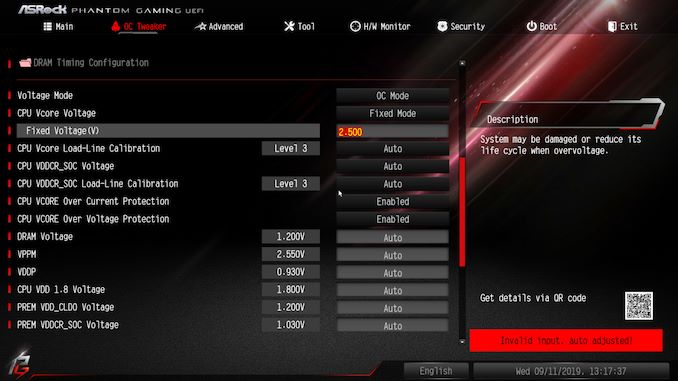
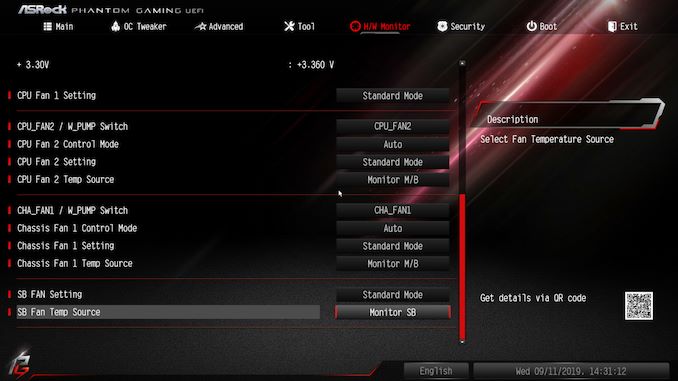
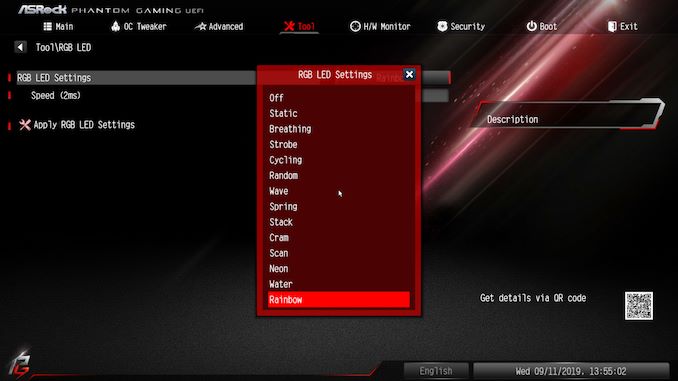






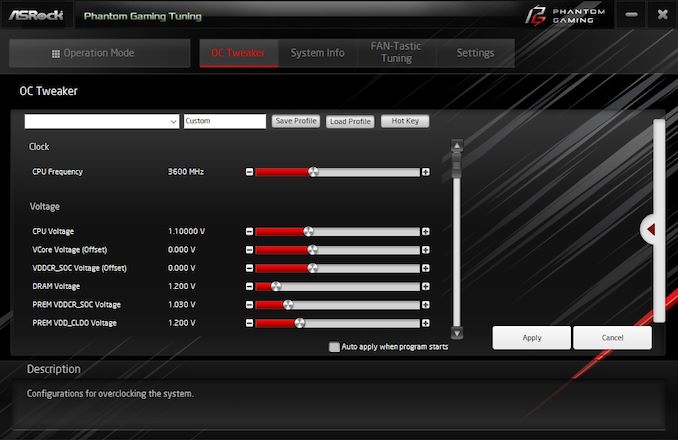
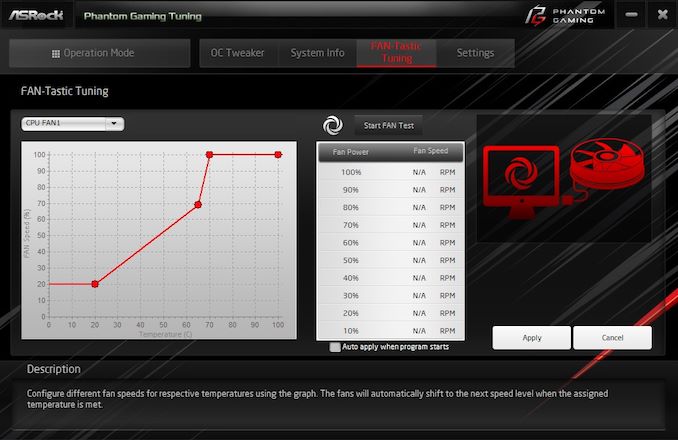

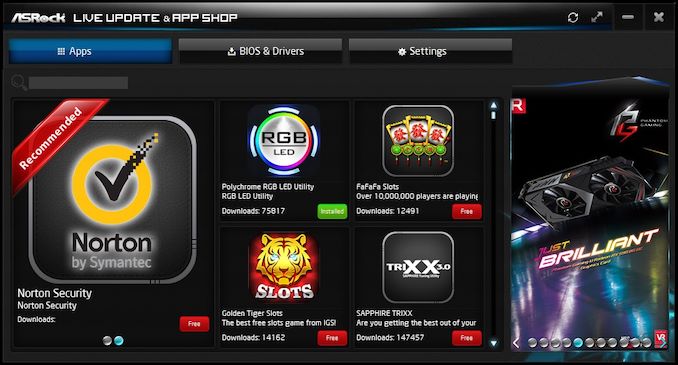














64 Comments
View All Comments
GreenReaper - Wednesday, October 9, 2019 - link
I think that's because Thunderbolt at a lower level works over individual 10Gbps lanes. You can have multiple "ports" but then you'll have multiple interfaces - perhaps you can team them at a higher level? But if it's Alpine Ridge you'll almost certainly be limited to low-power 10Gbps.firewrath9 - Wednesday, October 9, 2019 - link
huh? 18TB of SSD storage?My asrock Z87 Extreme11, with its 22 sata ports can do EIGHTY-EIGHT TB OF SSD
WOAH
also if 10gbe costs 100$, why is the X470 Taichi Ultimate only 50$ more than the non-ultimate? (it also has other additonal features)
lmille16 - Thursday, October 10, 2019 - link
Your board is an EATX board. DCide is talking about mITX boards....siuol11 - Friday, October 11, 2019 - link
I'd settle for 2.5 or 5G ethernet, both have readily available chips that cost under $10, and Intel is about to release one (the 225V) that costs less than $2.50.masteraleph - Thursday, October 10, 2019 - link
No, the M.2 is a big deal. If you're stuffing this into a small case- and plenty of people buying X570 ITX boards will- there's a big advantage to not having any 2.5" drives in the case, whether for airflow, cables, what have you.Calamarian - Thursday, April 16, 2020 - link
Shabby:You could always bifurcate the slot and add a 10GB NIC!
Some cases come with!
https://www.sliger.com/products/cases/sm580/
umano - Thursday, October 10, 2019 - link
I am so happy I am not alone with this, 16 cores and thunderbolt means one thing, content creator, not a gamer. I mean the cheapest thing you can attach to TB3 is a 10gbe (200$).There are a lot of video makers and some colourists (who do not need to work with 6-8k raw) that own the x299 itx because it can be portable even in a backpack.
Unless they have the crazy idea of putting a threadripper on a DTX board they lost a great opportunity. This board is a compromise for everyone, too expensive due to tb3 to who is budget-wise, as a gamer I would go with gigabyte for the 2 m2 and the backplate armour (and a very respectable 8 phase vrm) or better the dtx Asus board.
This board can be good only if someone wants a very portable setup with no GPU and they need a faster (x4 PCI 3) GPU. So almost none
I think except Asus maybe, but they were not that good either, manufacturers went very wrong with PCIe 4.0 and the x570.
Asrock could have used the 4x link from the chipset (like only Asus did on their pro board reviewed here) for the second m2, they could have swapped 2xUsb3 5gbs with 2 basic usb3 port for mouse and keyboard with the lanes shared with the wifi module (it will never need full bandwidth and how much data transfer is there for mouse and keyboard) so here you are the 10gbe.
I cannot think the number of devices that can saturate a TB3, 2 x 10gbps usb3 and 2x5gbps.
I have a Wacom tablet, 2 Eizo with 5gbps USB 3 hubs, a das, several and different external drives, HDD, SSD, and a printer. Even with one 10gbps USB, it would have been fine, we can have tb3, who needs to connect 2 nvme external drive? By the way 4 SATA ports without raid 5?
The 2080ti barely (2-3%) saturates a PCI 3 8x link, sharing the lanes between the GPU and the third m2 is not blasphemy at all, so there will be bandwidth, 12x PCIe 4, for a dual GPU card more powerful than a dual 2080ti.
So now I need to change pc and I will buy this board because of the TB3 but I hope they will understand their mistake and someone will release something better, way better
Now I have to spend 250 for the board, 300 for a thunderbolt dock with 10gbe (connected to the NAS) that I cannot use while I am using my raid das, 300+ for 64gb instead of 32gb because I cannot have a fast nvme drive for photoshop/DaVinci cache, and I still don't know how much for 2 custom water block for VRM, and other 40 for the chipset block and probably I will buy a USB DAC for headphones
So I know it is almost impossible to have a sabre and 3 m2 on an itx board but at least for me a board with that stuff and a big block for vrm and chipset, that could have saved some space for extra daughter boards, it is worth more than 900+ and still I would have saved money
I know it is insane and liquid cooling is not for everyone, but an ITX motherboard with 2 m2, tb3, 10gbe and some USB ports (maybe a second tb3) sharing the GPU link it is not unreasonable.
They probably did not do it because they want content creators going with threadripper, but 3d is not the only thing that matter, video has the largest market, and we cannot bring matx cases onset easily, especially because they are ugly and the market is accustomed to see apple products, so we get no money from it, so I will not buy threadripper even I know it is amazing
FiveOhFour - Saturday, January 11, 2020 - link
you have other options come onCheapSushi - Saturday, October 12, 2019 - link
Reaallly wish ASRock and others would push for Mini-DTX! With a second PCIe slot. Put the M.2 somewhere else. :OCalamarian - Thursday, April 16, 2020 - link
With both 10GB USB 3.2 and Thunderbolt I'd bet it's more an issue of available PCIe lanes than MB space...